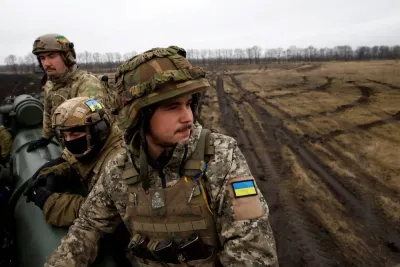Russia’s adventurous gamble to launch airstrikes in Syria, its most ambitious military campaign outside erstwhile Soviet borders in more than three decades, has risked a full-fledged Syrian war on a global scale. Russian pilots began striking “select Islamic State (IS) targets” in the war-ravaged country on September 30, but the bombs apparently fell in areas the terror group doesn’t operate.
Putin says he aims to prevent thousands of Russians militants now fighting for IS from returning home. But the Russian bombing pattern lays bare his covert design to prop up the Bashar al-Assad regime, which has long lost its authority to stay in power in Syria.
Assad’s military has lost control of about 80% of Syria to IS as well as more moderate rebels backed by the US and its allies. Russia’s biggest fear, shared by the US, is that IS fighters will sweep south from their stronghold in Raqqa and overrun the capital Damascus, the key to achieving their goal of carving out a “caliphate”. Putin wants to protect the coastal province of Latakia, the Assad stronghold, and create a corridor stretching to Damascus. He is also seeking to expand Russia’s only military toehold in the Middle East to ensure he has a role to play in the eventual Syrian political transition.
Arab countries have been critical of Russia’s military intervention to support Assad. Saudi Foreign Minister Adel al-Jubeir last month described the evolving Russian moves as an “escalation” and reiterated at a Gulf Co-operation Council (GCC) meeting that Syria can have no future while Assad remains in power. GCC foreign ministers also called for a political solution to the Syrian crisis “without any foreign intervention”.
No matter what Russia does, the Assad “regime cannot last”, US Defence Secretary Ash Carter warned on Monday. Russia’s actions in Syria could “pour gasoline” on the conflict rather than lead to an IS defeat, he said.
Stakes are high for Putin. He has so far ruled out sending ground troops, but the risk is real. Back home, Putin’s Syria mandate has only limited support with over 69% of Russian opposing a direct military intervention in Syria.
In a wider sense, the current high-stake imbroglio in Syria has been brought about by US indecision and Western inaction at critical moments in the four-plus-year-old conflict. The turning point, many analysts and diplomats say, came two years ago when US President Barack Obama and his European allies shied away from responding to the Assad army’s alleged nerve gas attacks on civilians east of Damascus.
True, IS wants to be known for its horrific acts of violence. But Assad, whose brutality has made him the terror outfit’s best recruiter, is not far behind.
The prolonged war, which has killed at least a quarter of a million people and displaced half the Syrian population, is only getting worse.
There is now wide agreement on the need to end the Syrian civil war, the Middle East’s biggest humanitarian disaster in decades, but not on how. And what comes of the Syrian endgame, will have a lasting influence in the region’s future.


